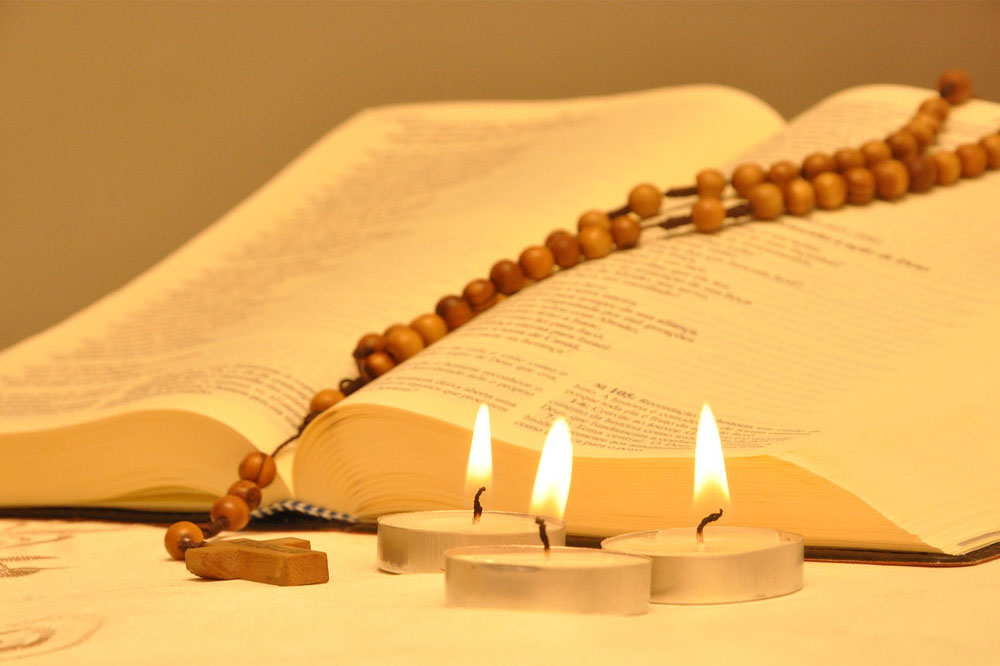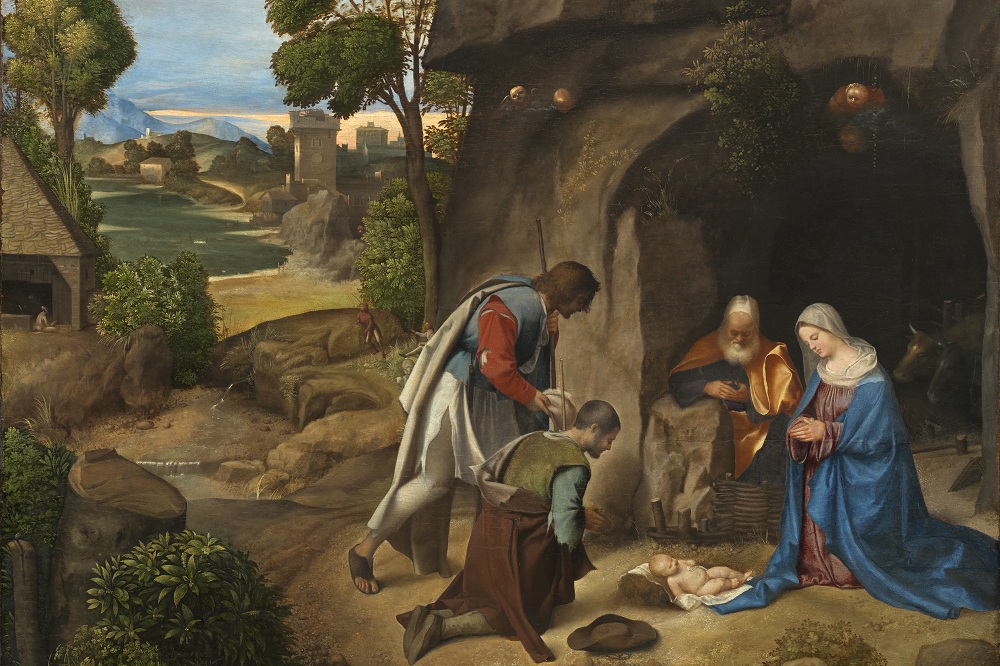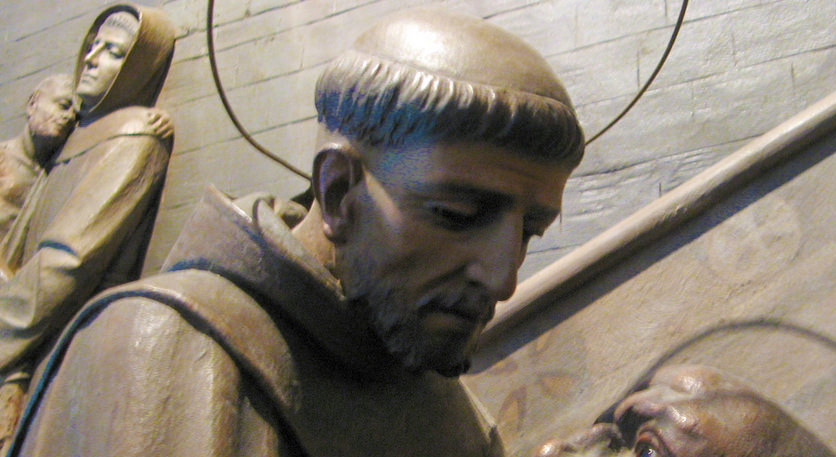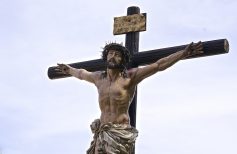Contents
At the time of the ancient Roman civilization in situations of extreme gravity, a commander could decide to sacrifice his life to ensure the victory of his own troops and the salvation of his men. To do so, he pronounced a vow to the gods of the underworld, with which he pledged to offer himself to them, and the enemy army. This act had the name of devotion, from the Latin deuouere, meaning “to make a vow”.
Devotion can therefore be summarised in an act of love and trust pronounced by man towards God.
In a Christian context, it is not necessarily an extreme sacrifice, with which the faithful offers his own life, but a religious practice addressed to God, to Our Lady, to a Saint, composed of spiritual love and fervent prayer. Indeed, devotion becomes a form of prayer that is optional, compared to the official Liturgy and that of the Hours, but which has spread over time in various forms, giving rise to celebrations and moments of prayer that have now entered the life of every Christian. 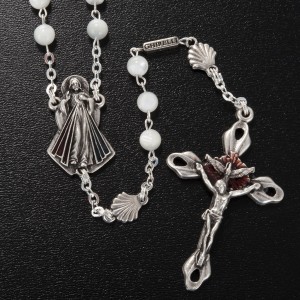 Let’s think about the recitation of the Rosary, the Way of the Cross, at the Angelus, but also about processions, pathways of prayer and spiritual meditation, such as the Sacred Mountains, devotional walks through sacred scenarios that offered to the fifteenth-century pilgrims a less expensive and more viable alternative to pilgrimage to the Holy Land.
Let’s think about the recitation of the Rosary, the Way of the Cross, at the Angelus, but also about processions, pathways of prayer and spiritual meditation, such as the Sacred Mountains, devotional walks through sacred scenarios that offered to the fifteenth-century pilgrims a less expensive and more viable alternative to pilgrimage to the Holy Land.
Devotional practices are a way in which the Church celebrates every day of the year with solemnity and fervour, turning her attention and her love to one saint, then to another, then to a particular characteristic of Mary or of Jesus. Although in some cases devotional practices have, over time, assumed a folkish dimension, it would be profoundly wrong to limit the importance of this phenomenon to picturesque festivals and popular processions alone. On the contrary, the popular feasts dedicated to the Saints, to Jesus and to Our Lady, as well as the main festivities such as Christmas and Easter, risk making us forget the true devotional and ascetic spirit from which they were born, which has been overwhelmed by consumerism and a culture that depletes these occasions of their solemnity. Instead, they are celebrations closely linked to the history and social development of the communities in which they developed, and were created to enrich the spiritual life of those who celebrate them, to make every day of every month, special and pleasing to God.
Let’s look at a few of them, sub-divided by the months in which they are celebrated.
January
The month of January is dedicated to the baby Jesus and in particular to the Most Holy Name of Jesus. Eight days after Christmas, the devotion of the Most Holy Name of Jesus is honoured, to celebrate the day when St. Joseph made circumcised him and gave him the name. This devotional cult has been celebrated since the origins of the Church. In fact it seems Saints Peter and Paul contributed to its spread, and later, in the Middle Ages, Saint Francis of Assisi was a proponent. San Bernardino and his confreres made it a liturgical feast. The devotion of the Most Holy Name of Jesus is focused on the power of the name of Jesus, as a defence and ornamentation for the faithful, a protection against evil and a precious talisman against demons, diseases and infirmities. Jesus revealed to Sister Saint-Pierre, the Carmelite of Tour, the Apostle of Reparation, the devotion to the Holy Name of Jesus of Jesus, which is recited on this occasion as a way of offering her unconditional love to Jesus:
Always to be praised, blessed, loved, adored and glorified, the Most Holy, the Most Sacred, the most adored – yet incomprehensible – Name of God
In heaven, on earth or in the underworld, from all the creatures that come out of the hands of God.
For the Sacred Heart of our Lord Jesus Christ in the Blessed Sacrament of the altar.
Amen
February
The month of February is dedicated to the Holy Spirit, the third person of the Most Holy Trinity. The Holy Spirit is God, and at the same time, the gift of love that God gives to his devoted children. It descends on believers like a burning flame and makes their words winged, so that they can reach the Father. February devotions also include those to the Holy Family, the family par excellence, the one composed of Jesus, Joseph and Mary. The prayers and litanies are all dedicated to this perfect example of Love and Faith, to which everyone should look to live in serenity and fullness. The devotions to the Holy Family express the will to do what pleases Jesus, Mary and Joseph and to avoid what could displease them.
March
The month of March is dedicated to devotion to Saint Joseph, which is celebrated on March 19th. St. Joseph is an example of a good and loving father par excellence, of a faithful and caring husband, but also of humble servant of the Divine Will, as he accepted his role as the husband of Mary and putative father of Jesus without questioning the design of God. St. Joseph is greatly honoured by the Catholic Church and enjoys a role of great importance in many prayers of the Roman rites.
He is also the protagonist of many devotional practices, such as the “practice of the Seven Sorrows and Joys of St. Joseph”, as well as many Litanies, such as the Cingolo or Cordone di San Giuseppe, the Coroncina di San Giuseppe, the Scapular of San Giuseppe, Sacred Mantle, the Perpetual Novena, the Perpetual Crown, the Perpetual Court. We turn to him to ask for graces and intercessions.
April
April devotions are addressed to the Eucharist, to the Divine Holy Spirit and to Divine Mercy. The Eucharist symbolises the sacrifice of Jesus, which is renewed at every Mass, and His being descending on those He loved to protect them and guide them after His death. The Eucharist contains in itself all the love of Jesus, in all its forms: crucified, unitive, adoring, contemplative, praying, intoxicating. To reserve time and attention to this devotion leads to the attainment of many graces and a sense of closeness to the priceless love of God. Jesus dictated the Chaplet of Divine Mercy to Saint Faustina Kowalska in 1935, promising that whoever recites this prayer would have the certainty of dying in peace and grace, and of letting those who have listened to them die peacefully. This devotion guarantees forgiveness even to the most hardened and recidivist sinners, showing the immensity of Jesus’ mercy.
May
The month is dedicated to Mary, the Mother of Jesus, who is blessed among women and mothers. Mary is a symbol and a role model for all women, of sacrifice, of humility and immense love. Wherever you go you will find statues of the Madonna in all her grace. In May, Mary is the protagonist of many festivals: on May 13th, Our Lady of Fatima, May 31st, Visitation, Mother’s Day. With devotion to Mary we turn to her as an intermediary between man and God, a sweet and loving spokesman for the troubles of humanity, a receptacle of dreams, desires, hopes. In this, Mary is the only one able to bring together those who have been lost to God, accepting prayers and repentance and raising it to heaven with the power of his love.
June
The Great Promise made by Jesus in Santa Margherita Maria Alacoque in 1620 started the devotion from the Sacred Heart of Jesus, which sees June as its reference month. Jesus said to the Saint:
“My divine Heart is so passionate about love for men, that since it can no longer contain the flames of its burning charity …I have chosen you to fulfill this great design.”
The devotion to the Sacred Heart of Jesus is therefore addressed to the merciful Jesus, reaching out to men, ready to forgive their sins, their weaknesses. Devotion to the Sacred Heart of Jesus protects from evil and purifies the heart of every sinner. Litanies and prayers celebrate this devotion, besides observing the three rules imposed by Jesus on the Saint with the Great Promise:
- Coming to Communion in the grace of God: If one is in mortal sin, confession is necessary.
- Devotion must be continued for nine consecutive months. For those who omit even one communion, must start all over again.
- Pious practice can start on the first Friday of any month.
The Sacred Heart of Jesus guarantees that none of those who have done the Nine First Good Friday will die in mortal sin.
July
Month dedicated to Precious Blood of Our Lord, the true salvation of the world, symbol of the sacrifice made by Jesus to cleanse humanity of all sins. The first Sunday of the month is consecrated to the Most Precious Blood of Our Lord, which should be honoured by showing repentance, temperance, moderation in passions, to prove worthy of the sacrifice of Jesus and the immense saving power of his Blood. This festival, is in some ways the crowning of the month of the Holy Heart that has just ended (June), as established by Pope Pius IX.
August
The month of August is dedicated to God the Father, to which a feast is dedicated during the liturgical year.
It was through mother Eugenia Elisabetta Ravasio (1907-1990) that the Father asked for a feast to be established in his honour. In this month, we should turn to God the Father, renewing his Will to entrust ourselves completely to him, consecrating ourselves to his will and invoking grace for ourselves and those we love.
September
September is the month dedicated to angels, the messengers between God and men, custodians and guides of our every step, in day dreams. We turn to them, invoking their protection and help, because they watch over us and give us the strength to believe and love God with all the strength we are capable of.
October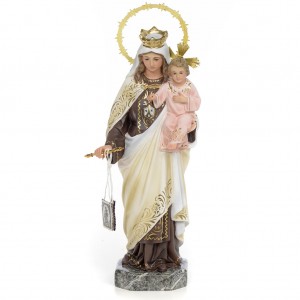
The month of October is dedicated to the Holy Rosary. The recitation of the Rosary has always been connected to the promise of obtaining a plenary or partial indulgence. Reciting the Rosary allows us to obtain graces and consolations through the intercession of the Virgin Mary. The name rosary derives from “crown of roses”. The rose is the symbolic flower of Mary. In fact, in the Middle Ages statues of Mary were decorated with rose crowns as a sign of love and devotion. The crown of the Rosary was born from these crowns, and used to pray and meditate. It was the Cistercians in the thirteenth century who contributed the devotion to the Virgin with the prayers to be recited using the Rosary. In 1571, on the occasion of the battle of Lepanto, Pope Pius V invited all Christians to pray with the Rosary to invoke the victory of Christians against the Ottomans. The victory of the Madonna della Vittoria festival originated in this victory, and later came the feast of the Madonna del Rosario (October 7th).
Other devotees and blessed, like Alano della Rupe, St. Louis Marie Grignion de Montfort and Blessed Bartolo Longo gave vigour to devotion, just as, more recently, the apparitions of Mary at Lourdes and to Fatima did.
The Holy Rosary is the most effective prayer against Satan.
November
November is the month dedicated to Souls of the Dead, and their memory. The devotion manifests itself through actions of suffrage for deceased loved ones, but also for the dead in general, and with a profound meditation on the transient nature of human life, and on its frailty before God. The prayers recited in the context of this devotion not only allow access to plenary indulgences, but also contribute towards purifying the souls of the dead, and saving them from Purgatory.
December
The month of December is naturally focused on preparations for Christmas, which celebrates the birth of Jesus, but also the Immaculate Conception of Mary, born without sin, pure and unique among women. For Christians the week of Advent represents a period of greater spiritual meditation, in view of the renewal of the birth of the Saviour, and offers numerous occasions for common prayer with the family and other faithful.

